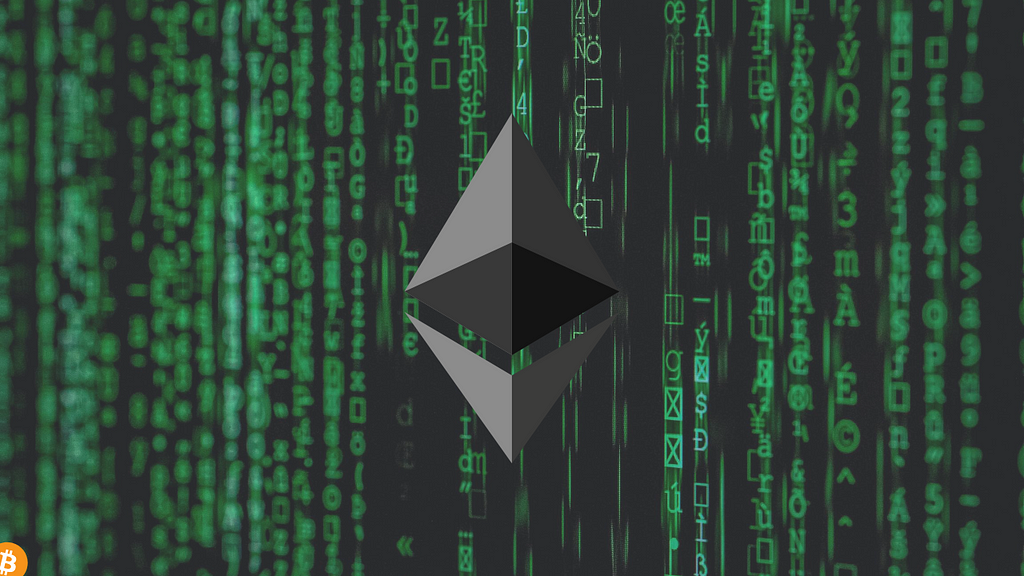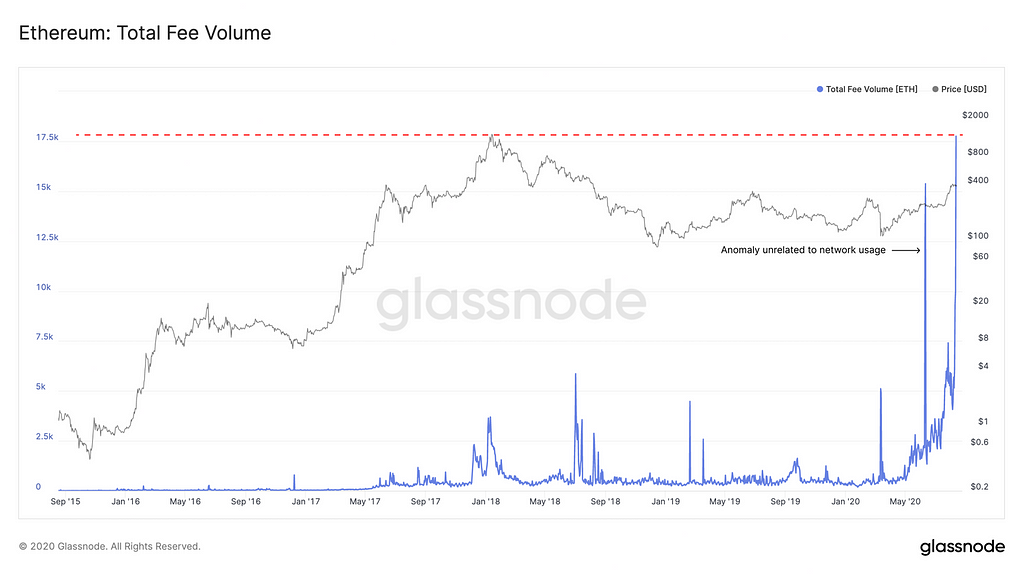Check out our new platform: https://thecapital.io/

Hows it going ya beauties? Welcome back to The Molesy Message!
With what looks to be an upcoming bull market in the crypto realm, I want to discuss a few other coins that have provided value in this fight for decentralization. With that being said, I don’t recommend buying anything other than Bitcoin. In my opinion, it is the apex-predator of money. Bitcoin is the only coin fully decentralized with no central presence to bring it down. Bitcoin is simple, sustainable, and scarce.
The only way I found bitcoin, however, is that I was intellectually curious. So naturally, I want to learn more about the space and what else is being built. There is a small % of my portfolio I use to play around with other coins to see how they are used and how they provide value to this new financial system.
Ethereum, the second-largest coin by market cap, has been on my radar a lot recently. There have been heated debates on twitter about Ethereum’s unknown total supply, and its high gas fees. *(note — Twitter is where everyone in the crypto industry communicates and is an excellent reputable place to get information.)
- Watch this video for more details on Ethereum supply audit:
2. A snapshot of a report by Glassnode this morning regarding ETH high fees.
“Ethereum Gas Price at All-Time High
The amount of fees being spent on the Ethereum network is higher than ever before(now even higher than the single day in June with anomalous fees unrelated to regular network usage).
Over 17,500 ETH (USD$6.8 million) are currently being spent on fees daily on Ethereum.”

All of this noise comes after finishing Camila Russo’s new book, The Infinite Machine, which stories Vitalik Buterin (founder of ETH), the beginnings of Ethereum, and its rise to the number 2 cryptocurrency.
So you are probably asking yourself, “What the hell is Ethereum? I was just getting the hang of Bitcoin!”
Let’s remain intellectually curious, shall we? I always say a curious person is a rich person. Rich in wealth and happiness. Life is more enjoyable if we keep a beginner’s mind.
Since I am not an expert in decentralized finance or Ethereum, let’s have Camila Russo be our guide.
Below I show my favorite quotes from Camila’s book which are organized in a way you will be able to understand Ethereum. I also add some comments to clarify.
Before Ethereum and Bitcoin
“Cryptographers had been trying to come up with a private, peer-to-peer digital currency since at least 1980.” (pg. 11)
eCash was created in 1983 as an anonymous digital currency but it wasn’t a success because it wasn’t fully decentralized. It still relied on banks to sign the digital currency. This action would still allow for censorship and destruction.
“Nick Szabo, the cryptographer who in 1988 invented the digital currency ‘Bit Gold,’ coined the term ‘smart contract’ in the early 1990s. In a 1997 paper, he said smart contracts “combine protocols with user interfaces to formalize and secure relationships over computer networks.” The system eliminates the need to pay for and trust third parties like auditors, accountants, lawyers, and notary publics, as the agreements are executed through a computer program. The humble vending machine is a primitive precursor to smart contracts Szabo wrote in the paper.” (pg. 43)
Bitcoin uses this tech but it is somewhat limited to only a few uses cases. Along comes Ethereum!
Ethereum — Digital Anything
*(note — Vitalik is the founder of Ethereum)
“This leads to another key difference with Bitcoin in what Vitalik called the ‘first-class citizen’ property of Ethereum — the idea that contracts have equivalent powers to external (or people’s) accounts. This makes running applications with self-executing code easier, as there’s no need for someone to pull the trigger. If the purpose of blockchain technology was to remove the middleman, this concept was ingrained at the core of Ethereum. (pg. 66)
“All these parts come together to form a foundational layer: a blockchain with a built-in Turing-complete programming language, allowing anyone to write smart contracts and decentralized applications. (pg. 66)
“Some of the applications that could be created on top of Ethereum, Vitalik wrote, are digital currencies, hedging contracts, a domain-name-system, a reputation system, a shareholder-run-corporation where decisions on where to move funds can be made by a quorum of investors, ‘and potentially even the groundwork for a social network.’ Another example was crop insurance…A contract for difference using a data feed of the weather instead of any price index, and on-chain decentralized market place, and the list went on.” (pg. 66)
“While Bitcoin was digital money, he understood that Ethereum could be digital anything.” (pg. 83–84)
“We don’t have features, we have the programming language. Out of this one single Lego brick of cryptocurrency, you can make pretty much everything.” (pg. 88–89)
The dream to take down banks, eliminate lawyers and useless middleman, and build a new internet was the mission of Ethereum. Yes, a very lofty goal.
The Goal — Web 3
“Web 1 is the internet of the 1990s, before user-generated content, indexed search, and social media platforms. It lived exclusively in desktop computers. Web 2 is the internet as we know today, with user-generated content, steaming video and music, and location-based services. It thrives on mobile devices.” (pg. 113–114)
“This new internet is made up of concepts including the semantic web, or a web of data that can be processed by machines, artificial intelligence, machine learning, and data mining. When algorithms decide what to recommend someone should purchase on Amazon, that’s a glimpse of Web 3.” (pg. 113–114)
“Web 3 would allow people to interact without needing to trust each other. It should be a peer-to-peer network with no servers and no authorities to manage the flow of information. Ethereum would be instrumental for this Web 3 vision to become a reality, and much of how the project was defined, with teams focusing on decentralized messaging, storage, and browsers, had the goal of helping shape the next version of the internet.” (pg. 113–114)
If Ethereum can pull this off, the world will look very different. If Bitcoin can pull off its fight against the US dollar, the world will look very different. I remain bullish and optimistic.
Conclusion
“The revolution had started with Bitcoin, and now Ethereum opened up a whole new arsenal in this underground fight toward a decentralized future.”
-Camila Russo in The Infinite Machine (pg. 7)
Obviously there is so much more to discuss regarding this new digital asset. I have found things I love about Ethereum and several things I am very worried about (ex. scalability and not being fully decentralized like Bitcoin). However, I don’t want to overwhelm you in this newsletter. I’ll dive deeper into Ethereum in the days to come.
If you don’t want to wait, buy, and read Camila Russo’s book! She worked extremely hard on this and provided an unbiased, incredible story.
I don’t know what Ethereum’s future holds, but I do respect the army of crypto-hackers willing to sacrifice everything to make web 3 a reality.
Remain curious ya beauties.
-molesy
Thank you for reading The Molesy Message, a daily letter containing all the information I found interesting in the Bitcoin world over the last 24 hours.
If you want articles like this directly into your inbox everyday, go to https://marcusmoles.substack.com and subscribe!
I will only post the newsletter occasionally on Medium.
As a reminder, this is not financial advice. Do your own research.
https://twitter.com/thecapital_io
What Is Ethereum? was originally published in The Capital on Medium, where people are continuing the conversation by highlighting and responding to this story.
from The Capital - Medium https://ift.tt/3m3yAbM
0 Comments